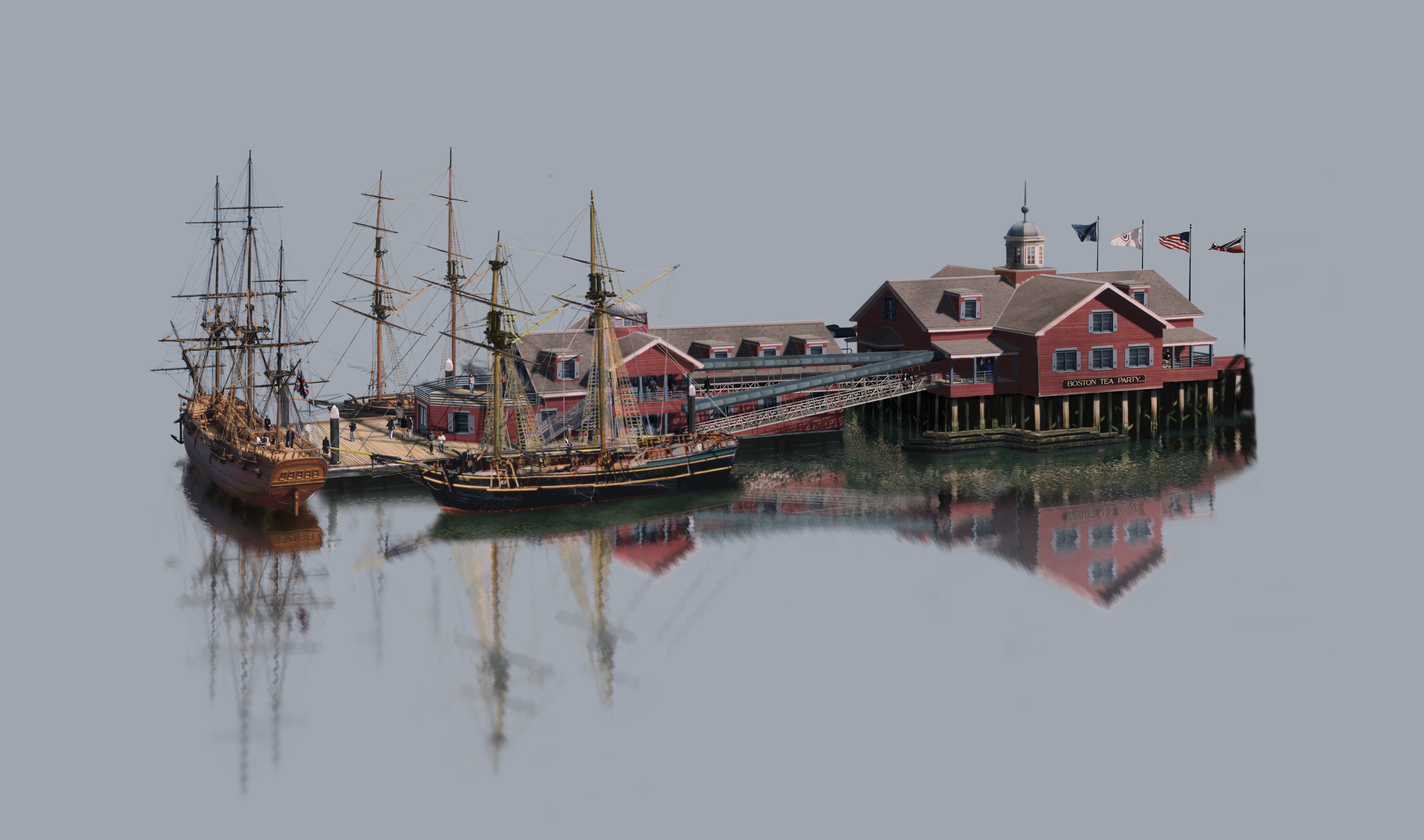AUGUST 7, 2012--Merging the building industry’s latest technology with one of the most famous stories in American history, Suffolk Construction recently completed construction of the new $27 million Boston Tea Party Ships & Museum in time for its grand opening ceremony.
Suffolk leveraged its “build smart” approach and state-of-the-art technologies to meet numerous challenges on this 18,700-sf project. One of the most significant challenges was finding a way to house the extensive mechanical, electrical, and plumbing (MEP) systems in the unusually tight confines of the museum’s attic space. To address this challenge, Suffolk implemented virtual models and BIM early in the planning process to re-work the layout of the MEP systems to ensure they would fit in the allotted space. This innovative solution allowed the team to prefabricate much of the MEP components off site, allowing for a more efficient installation on this very tight building site.
The two-story Boston Tea Party Ships & Museum, designed by Margulies Perruzzi Architects, sits on a floating barge with a Tavern/Tea Room on the top floor. The barge is surrounded by two historic replica ships, with a third ship expected to be added in 2014. The adjacent pier building contains a retail store, meeting rooms and offices. +
Related Stories
Building Team Awards | Apr 10, 2015
New arts venue reinvigorates Virginia Tech's campus
The STV-led Building Team creates a world-class performance and arts venue with learning and entrepreneurial dimensions.
BIM and Information Technology | Apr 9, 2015
A carboard box by Google can bring virtual reality to architecture
The global search engine giant has launched a new product, Google Cardboard, that easily allows users to experience virtual reality.
Building Team Awards | Apr 9, 2015
Multifaced fitness center becomes campus landmark
A sloped running track and open-concept design put this Building Team to the test.
Building Team Awards | Apr 9, 2015
Nation's first LEED-certified bus depot
A bus garage in Harlem shows that even the most mundane of facilities can strut its environmentally sensitive stuff.
Building Team Awards | Apr 9, 2015
Setting the bar for port-of-entry design
Whenever you eat a tomato from Mexico, there’s a one-in-three chance it came through this LEED Gold gateway.
Building Team Awards | Apr 9, 2015
Big D’s billion-dollar baby: New Parkland Hospital Tops the Chart | BD+C
Dallas’s new $1.27 billion public hospital preserves an important civic anchor, Texas-style.
Building Team Awards | Apr 9, 2015
IPD-driven fusion facility serves science and student life in Chicago
In dire need of modern science labs and a student union, North Park University built both—in the same building.
Building Team Awards | Apr 9, 2015
‘Prudent, not opulent’ sets the tone for this Catholic hospital
This Building Team stuck with a project for seven years to get a new hospital built for a faithful client.
Building Team Awards | Apr 9, 2015
9/11 museum triumphs over controversy
The Building Team for this highly visible project had much more than design, engineering, and construction problems to deal with.
Building Team Awards | Apr 7, 2015
Unique test facility will help make wind power more feasible
A new facility at Clemson University makes it possible to test the huge stresses that large-scale wind turbines must be able to withstand.

















